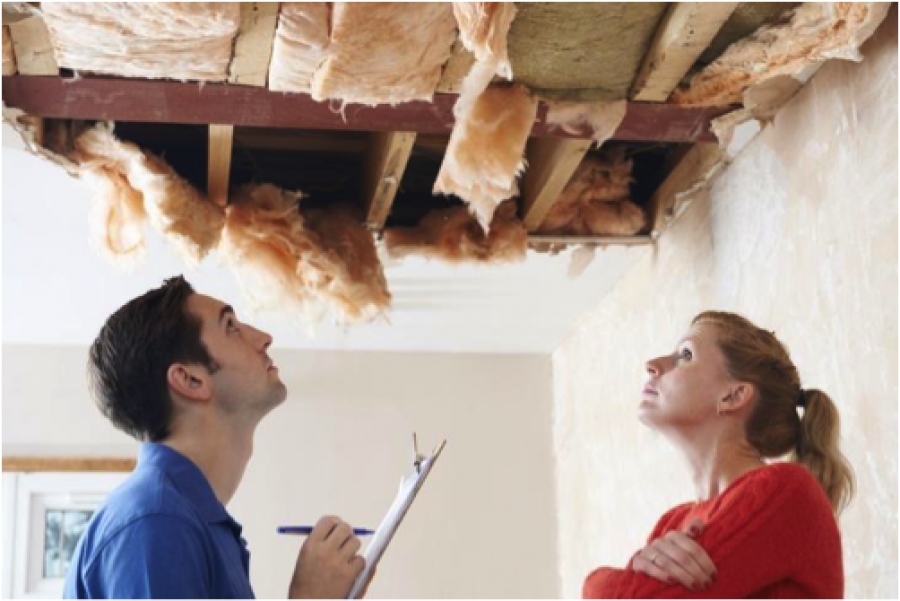The good news is the big storm is over. The bad news is that your house is damaged, and the repairs will probably be expensive to fix. Big leaks, water damage in the walls and roof repair are just some of the unfortunate outcomes of extreme weather. Just the wind alone can damage your roof—and those costs can add up fast. Home Advisor estimates that it costs $5,000 to $10,000 for roof repair. Water damage is estimated to be around $1,000 to $8,000.
You’re probably thinking you don’t have that kind of cash at the moment to cover it. If you’re like many Americans, you don’t even have $1,000 saved in an emergency fund to help you in these types of situations. But while the initial cost of repairs can cause sticker shock, you can find the money you need to make your house livable again.
4 steps to assess your home’s damage
Before you worry about the cost, it’s always a good idea to inspect your home carefully to gauge the extent of the repairs needed. Get your smartphone out and document any damage, as that can help speed up your insurance claim (if you file one).
1. Walk around the exterior of your house
Scan the perimeter of your home. As you’re scanning, look for things like missing shingles or bricks from your chimney that may have fallen to the ground from the storm.
2. Check the roof
Walk to your backyard and front yard to get a view of the roof.
3. Check the attic
If you have an attic, see if there are any water stains on the ceiling or walls.
4. Call a professional
Get the damage inspected by a professional so you can accurately figure out how much it will cost.
This person may also be able to answer questions around repairs that may be covered by homeowners insurance or home warranty policy (if you have one). Certain causes of storm damage such as wind, hail and lightning could be covered by homeowners insurance. Call your insurance or warranty company to see if you’re covered.
Options to help cover the cost of repairs
If you’re quoted a price that’s well out of your means, what can you do? Some options include:
1. Borrow money from The Bank of Your Parents, if they are even in a position to help you out. But let’s be honest, mixing money and family could be a disaster and added stress on top of the stress you already feel from the damage to your home. Next option…
2. Turn to your credit cards — but keep in mind you’ll have to deal with the interest rate. The average new credit card APR is 19 percent. If you used $10,000 to fix your roof with that 19 percent APR, and only made minimum payments to pay it off in 5 years, you could end up paying over $5,000 in interest! Next option...
3. Apply for a personal loan, which often has lower interest rates than a credit card. Some online lending platforms have interest rates as low as 7 percent. That same $10,000 roof repair with a 5 year loan may only cost you about $1,880 in interest, rather than $5,000. That’s a huge saving!
Details of personal loans
The word “loan” can sound scary, but people use personal loans to pay for medical bills, purchase a car, pay off taxes, pay weddings, go on vacations and even cover the cost of Christmas presents.
Personal loans must typically be repaid within one to five years. Keep in mind the rate and loan amount may be contingent on your credit and overall financial standing.
What kind of credit do you need for a personal loan?
If you have good credit, personal loans can work to your benefit because they are typically unsecured. This means the loan approval is based on creditworthiness, rather than collateral — so you won’t need to put your home or car on the line in order to get the loan.
However, times are changing and some lending platforms are no longer looking at credit as the only factor. They may consider your education, area of study, and job history to get a better picture of your risk factor.
Bottom line
Even if your home doesn’t have significant damages, have a plan for how you’ll cover expenses in the event of an emergency. If you don’t have the cash on hand, a personal loan may be your best bet. In the meantime, set up an emergency fund and make it a priority to put away extra money just in case.
Claire Tak writes for Upstart about all things personal finance. She has a background in finance technology, and her work has appeared in major publications such as Forbes, Bloomberg and FOX News. Claire is based in Oakland, California and enjoys traveling in her spare time.





